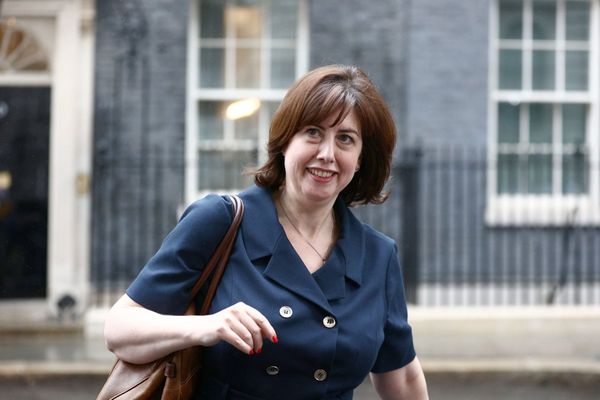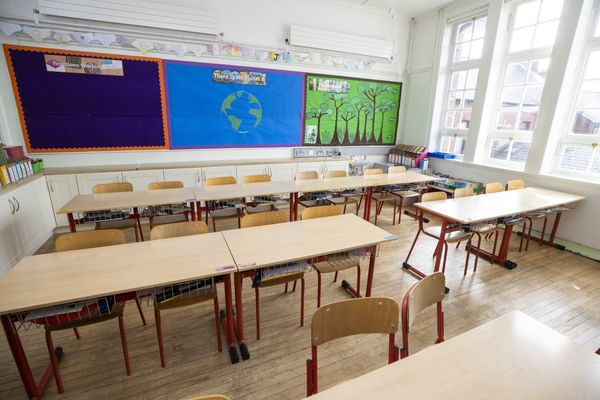
Named after the 13th-century German philosopher and theologian Albertus Magnus, Albertus was inspired by letterforms that had been carved into bronze. It was designed in the 1930s by Berthold Wolpe, a leading book jacket designer at publisher Faber and Faber who employed Albertus and hand-lettering in many of his cover designs Photograph: Peter Dawson

The Newcastle upon Tyne consultancy, Gardiner Richardson, used graphic designer and typographer Margaret Calvert's eponymous typeface to striking effect in their rebranding of the Tyne and Wear Metro identity system. With colleague Jock Kinneir, Calvert is famous for designing the majority of UK road and traffic warning signs and typefaces during the 1950s and 1960s Photograph: Peter Dawson

In one of the most ambitious type programmes ever commissioned by a newspaper, a typeface family was created for the redesign of the Guardian in 2005. Consisting of just over 130 styles, the lead family is a contemporary Slab Serif. Influenced by Egyptian typefaces created in London foundries in the mid-19th century and by contemporary Dutch type, the range of groundbreaking typefaces for The Guardian now allow for huge flexibility when presenting a diverse range of subject matter in the paper and online, from news to detailed financial listings Photograph: Peter Dawson

Roll up, roll up! All the fun of the fair is to be had with this playful yet intricate revival of a 19th-century wood letter Slab Serif face. Rosewood is available in two variants: Regular is an ornate, decorative design with a drop shadow; Rosewood Fill allows for a second colour to be employed as a background tone. Released in 1994 by Adobe as part of its Wood Type collection, Rosewood is inspired by a chromatic design by William Page in 1874 Photograph: Peter Dawson

Based on a typeface produced in 1910, this classic Slab Serif has proved popular ever since its creation. Although inspired by early wood-cut display faces, its development through the years has created a variety of weights, providing enough flexibility for it to be used with lighter weights as both a successful text face and a display and heading typeface in its bolder, heavier incarnations. Because of its even stroke weight, clarity in presentation, and imposing aesthetic, Rockwell has been adopted and redefined for a number of logotypes globally, including Playboy and the Public Broadcasting Service Photograph: Peter Dawson

Often mistaken for Helvetica or Univers, Akzidenz Grotesk was their ancestor and inspiration and is deemed by many as the ‘original’ Sans Serif. Although similar in appearance to its aforementioned relations, Akzidenz Grotesk possesses visual differences by comparison in its proportions and has subtly varying stroke weights, providing the letterform with more character and a softer, warmer edge over its rivals Photograph: Peter Dawson

Renowned type designer Matthew Carter’s task of designing a new typeface to meet specific technical challenges for AT&T’s hundredth-anniversary phonebook resulted in the innovative and highly regarded typeface Bell Centennial. Carter’s solution was to create a condensed Sans Serif that would work at very small sizes (6 point), thus allowing for more characters to be placed on a single line. This not only stopped the running of addresses on two lines but also negated the need to abbreviate the majority of them, thereby reducing the page extent of the new phonebooks. The smaller extent helped the company save millions of dollars Photograph: Peter Dawson

With its strong, clean, geometric appearance, influenced by the minimalist aesthetic of the Bauhaus, Futura is seen by many, despite not having any direct links with the Bauhaus School, as representative of the principles behind the movement’s teachings. The typeface is a combination of designer Paul Renner’s principled constructivist belief – that a modern typeface’s form should be based on the circle, triangle and square – and the foundry’s wish to impart a practicality and usability on his ideas and sketches Photograph: Peter Dawson

Helvetica is possibly the most widely used (and certainly the most famous) typeface in the world, adored and loathed in equal measures by designers and typographers everywhere. The neutral appearance, distinctive clean lines and clear legibility of Helvetica make it an easy spot for even the most casual spotter. Helvetica was developed in 1957 by the Swiss type designer Max Miedinger and Eduard Hoffmann of the Haas Type Foundry with the intention to create a new Sans Serif typeface to compete with the established Akzidenz Grotesk Photograph: Peter Dawson

Despite its contemporary and technological aesthetic, this typeface is well on the way to its centenary. Widely employed to promote films, books, television and video games, it is often seen in the science fiction genre. Designed by the highly influential American type designer Morris Fuller Benton, Bank Gothic has survived the test of time and is still one of the most popular typefaces for display and titling Photograph: Peter Dawson







